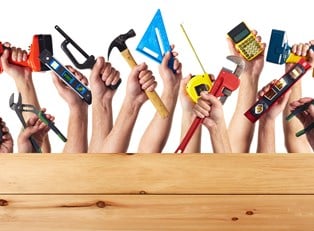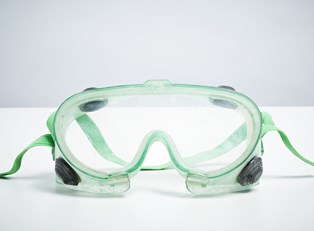If you are a do-it-yourself type of individual, you already know that having the proper tools is of extreme importance. However, your home contains numerous appliances and fixtures, plumbing components, and various items that can break or become in need of repair. The house itself is a complex structure containing wiring, tile, siding, wood framing, drywall, and hundreds of other material components.
Having the right tools on hand when they are needed certainly helps get the project or repair job completed without major complications. Here is a short list of tools that every DIY homeowner or apartment dweller should have.
Tool Box Necessities
A cluttered tool box is something to be avoided. If you dump in every nail, screw, and screwdriver head, it becomes impossible to find what you need at a moment's notice. Remember that your tool box can be taken with you throughout the house so keep it stocked with the most important items that you will need to perform small tasks.
Your hammer should be of medium weight and have a comfortable grip. Remember to select a model that has a claw grip with just enough space to fit a nail in the gap. Anti-vibration hammers are becoming quite popular, so check out these at your local hardware or home improvement store.
Keep two sets of pliers in your tool box. One should be a wire-stripper and cutter, and the other should be able to handle larger objects. Remember to keep a utility knife in the tool box. This tool can cut through drywall as well as fabrics. Keep a spare blade in the interior compartment of the knife.
Keep three screwdrivers in your tool box. One should be a standard head, one should be a Phillips head, and the other should be a square head. Smaller micro-screwdrivers should be kept elsewhere in the house as they can become lost underneath larger objects in the tool box.
Keep some duct tape and your tape measure in your tool box. Tape measures that are not self-closing are the best bet because you have more control over the extension. A stud sensor should also be carried in your tool box. Remember to check the batteries periodically. Your stud sensor is of no use if the batteries have run down.
Three Saws You Need
You will need a wood-cutting saw, a coping saw, and a hacksaw. The wood-cutting saw does not need to be extremely large or heavy, but it should be thick enough so that the blade does not warp or catch when sawing through framing. Your coping saw can be used to cut through wood dowels as well as some types of rigid plastic. Your hacksaw is used to cut metal. Remember to purchase hacksaw blades in sets because they break rather easily.
Other Important Items
You will want to have a heavy-duty pipe wrench to take care of plumbing problems. A pipe wrench makes it easy to work on under-the-sink plumbing as well as for loosening bolts or screws on other appliances. You should have two bubble-type levels in your tool armament. One should be about three feet long, and the other should be about one foot long.
A cordless drill is an absolute must. Purchase a model that delivers at least 15V of power and has the latest, most advanced lightweight batteries. Store your drill and the bit accessories in their own box rather than inside a large tool box.



